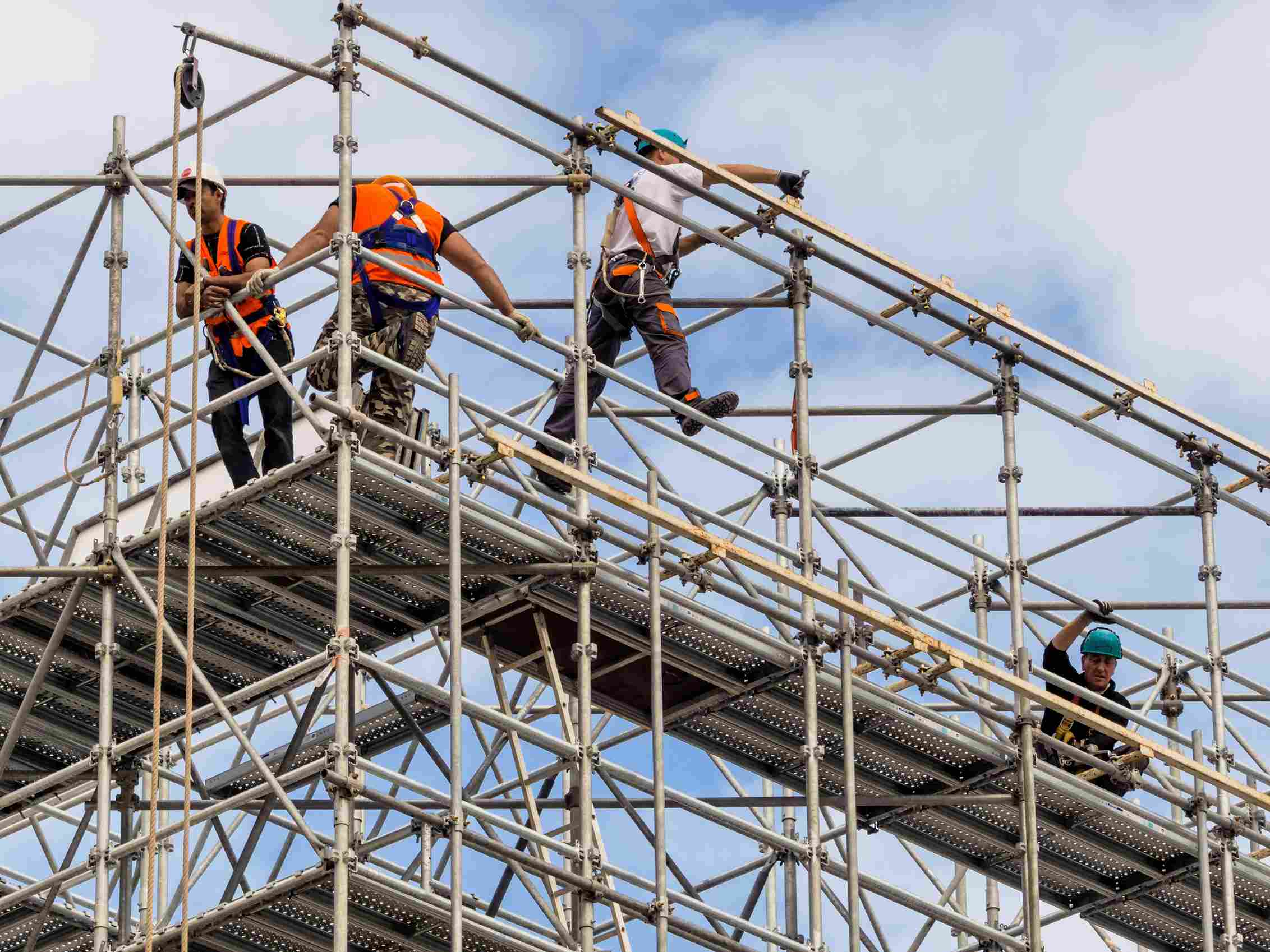Scaffolding, those temporary structures you often see at construction sites, is crucial in building and repairing structures in Florida. But with their use comes a risk.
Unfortunately, scaffolding accidents are not rare events. Each year, numerous workers face injuries due to falls or scaffold collapses. At Sternberg | Forsythe, P.A., we believe awareness is the first step to prevention.
By understanding the common reasons these accidents happen, we can better prepare, train, and equip our workers. This ensures their safety and improves the overall standards of construction practices.
If you are injured in a scaffolding accident, our workers’ compensation attorneys can help you with your claim.
Background on Scaffolding Usage in Florida
Scaffolding is the backbone for many construction and maintenance projects in Florida. These temporary structures provide workers with safe platforms, ensuring tall structures can be built or repaired effectively.
However, when using scaffolding, there are some unique challenges. Florida’s weather is the biggest issue. The warm sunshine draws many, but the state’s frequent rainstorms and strong winds can pose risks for outdoor work. This unpredictable climate makes the stability and safety of scaffolding even more essential.
The Most Common Causes of Scaffolding Accidents
As mentioned, one of the best ways to prevent scaffolding accidents is to know the most common causes. In Florida, some of the most common causes seen include:
Improper Installation or Assembly
Scaffolding is a complicated structure with stability that relies heavily on proper assembly. Surprisingly, many scaffolding accidents can be traced back to simple oversights during installation.
A missed bolt or an unstable foundation can be all it takes for the entire structure to collapse. Also, every scaffolding system comes with specific manufacturer’s guidelines. Ignoring these or cutting corners can have catastrophic results. It’s crucial to adhere to these guidelines rigorously, ensuring the safety of everyone working on or around the scaffolding.
Lack of Proper Training
Training isn’t just a formality; it’s a lifesaver. Workers trained in scaffolding assembly, disassembly, and usage are less likely to face accidents. On the flip side, many scaffolding incidents involve workers without proper training.
Research shows that untrained or poorly trained workers are more susceptible to making errors, leading to preventable accidents. Investing in comprehensive training sessions can dramatically reduce the chances of mishaps, ensuring a safer work environment for everyone involved.
Natural Elements and Weather
Florida is no stranger to unpredictable weather patterns. With frequent storms, gusty winds, and sudden heavy downpours, outdoor work can become risky. Such elements can weaken the scaffolding’s stability, especially if it’s not erected to withstand these challenges.
For instance, strong winds can sway the scaffolding, making it unstable for workers. Rain can make platforms slippery, increasing the chances of slips and falls. Before commencing work on scaffolds, it’s vital to check the weather predictions and ensure the structure can withstand the forecasted conditions.
Wear and Tear and Lack of Maintenance
Like any other structure, scaffolds wear down over time. Continuous exposure to the elements and regular wear and tear from daily use can lead to weakened components. Using old or damaged scaffolding without thorough inspection is a recipe for disaster.
Firms must implement regular maintenance checks, ensuring that any damaged parts are promptly replaced, and the entire structure remains up to safety standards.
Inadequate Safety Equipment
Even the sturdiest of scaffolds are not immune to accidents. That’s where safety equipment comes into play. Tools like safety harnesses, nets, and guardrails are designed to provide additional protection.
However, there have been numerous incidents where the absence of such safety measures led to severe injuries or even fatalities. Ensuring that all safety equipment is in place, in good condition, and used correctly by workers is paramount to reducing the risks associated with scaffolding work.
Florida Laws and Regulations on Scaffolding
Florida has clear regulations in place regarding scaffolding, ensuring the safety of both workers and the general public. These laws mandate that all scaffolding structures must adhere to specific safety standards, which often mirror or even exceed national guidelines.
The rules emphasize the scaffolding’s strength, stability, and proper assembly. Load limits are also explicitly defined, ensuring no scaffold is burdened beyond its safe capacity.
Adherence to these laws falls on the shoulders of employers and construction companies. They must ensure that the scaffolding is up to code and that all workers have been adequately trained to work on these structures.
Violations can lead to significant penalties, and more importantly, they can jeopardize the safety of workers. Employers have a legal and ethical duty to ensure that every scaffolding structure erected on their watch meets or surpasses the stipulated safety standards.
Steps to Prevent Scaffolding Accidents
Preventing scaffolding accidents is essential. Some tips to help with this include the following:
- Best Practices in Installation and Maintenance: A good start is half the battle. Ensuring proper installation in accordance with guidelines sets the tone for the safety of the entire project. Routine maintenance checks can catch issues before they become hazardous.
- Continuous Training and Safety Drills: Knowledge is power. Regularly trained workers participating in safety drills are better equipped to handle emergencies and can prevent accidents through proactive measures.
- Invest in Quality: The materials and equipment used play a pivotal role in scaffolding safety. By investing in high-quality, durable materials and state-of-the-art safety equipment, companies can significantly reduce the chances of accidents.
Get Help with Your Scaffolding Accident Workers’ Compensation Claim
Scaffolding accidents can have devastating consequences, but many of these incidents can be prevented with awareness and proactive measures. Florida’s regulations and diligent adherence by employers and construction firms create a blueprint for safety.
By prioritizing proper installation, continuous training, and high-quality equipment, we can ensure a safer environment for all. At the end of the day, safeguarding our workers isn’t just a legal obligation—it’s a moral one, and by working together, we can make scaffolding accidents a rarity.

